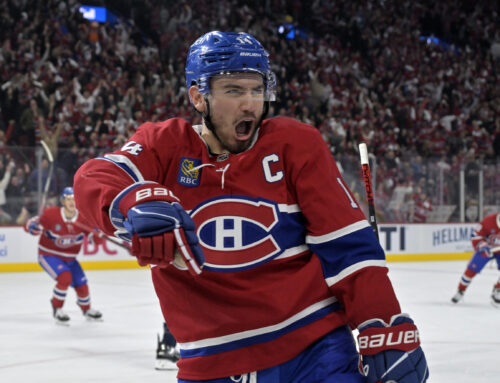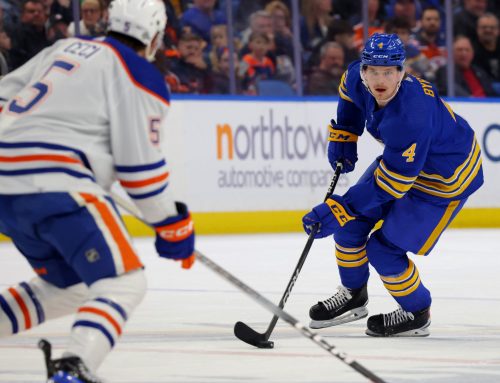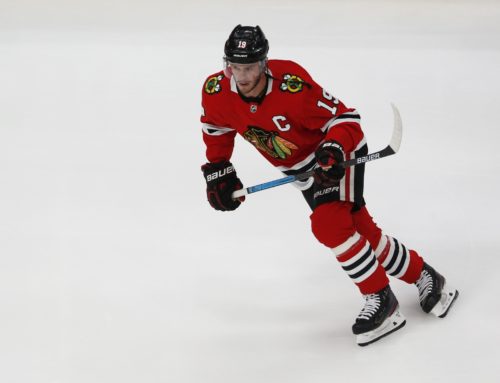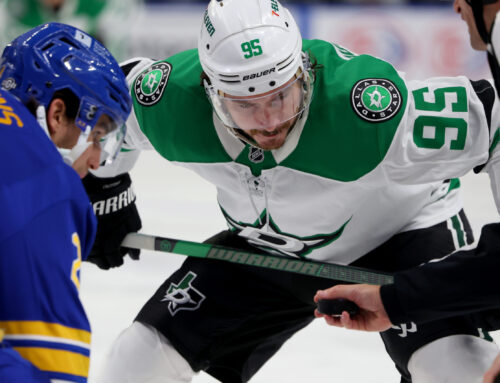The DobberHockey Fantasy Guide is now available for download! In it you'll find player projections, sleeper picks, Calder nominees, analysis of goalie hierarchies, and so much more! Pick up your copy to support the site and bring yourself one step closer to a fantasy championship!
~
During an NHL season, we're able to pay close attention to everchanging storylines and circumstances. The media – including awesome columnists at DobberHockey – keep us up to date on hot streaks and dry spells around the league so we can adjust our fantasy lineups accordingly. However, when a season ends, we lose a lot of this detail and specificity. Microscale views shift to macroscale perspectives as we look back on a player's overall production from the campaign to assess how well they played and to make projections for the upcoming season. Such a strategy might cause us to miss events that happened in a small sample, which could have given us more information about how a future season will play out. For example, say someone had a strong start to the year but then circumstances changed, causing them to produce at a more modest rate the rest of the way. That's a story you might miss when looking at overall production.
To gain a better appreciation for some of last season's small-scale storylines, I thought I'd review production from each quarter. Here are some of my noteworthy findings:
The 26-year-old defenseman had an outstanding first quarter, racking up 22 points in his first 22 games. Notably, eight of those points came on the power play, even though he was only seeing 33% of Vancouver's total time with the man advantage. I'll always be skeptical of a player's production when a significant portion of their output is comprised of power-play production but they don't have a stable role on the top unit. That caution was well founded in Hronek's case as he posted just 26 points – including just three on the power play – in his final 59 appearances.
The fun-sized sniper had an incredible showing not only in the first quarter, but the first half of last season, posting 38 points in his first 41 outings. It seems his output was propped up by special teams as 13 of those points came on the power-play, with DeBrincat enjoying a 61% share of Detroit's total PP time. Unfortunately, the script flipped in the second half as his share dropped to 44% and he managed just six PPPs and 29 total points in his final 41 games. Fortunately, David Perron, who may have taken some PP time away from DeBrincat last year, isn't in the picture anymore after signing with the Senators.
In Mittelstadt we have another player who performed very well in the first half but fell off in the second. His offensive decline is partially explained by a role reduction that began shortly before he was traded to Colorado at the deadline and continued as he closed out his campaign with the Avalanche. Mittelstadt posted 33 points over his first 40 games, skating nearly 19 minutes a night. However, he tallied just 24 points in the back 40, with his average ice time dropping to under 17 minutes per game.
It's easy to forget because his overall numbers weren't all that special, but Hill had a fantastic start to last season. He was arguably the league's best goalie in quarter one, posting a .933 SV% and 1.96 GAA in 13 games and stopping 11 goals above expected (via Evolving Hockey). He was hinderd by injuries thereafter, so let's hope for a clean bill of health this year.
Looking at Coleman's overall numbers from last season, it seems like he was able to achieve a career-high 54 points thanks to an expanded role with the Flames. After averaging around 15 minutes of action a night during his first two campaigns in Calgary, he was up to 17 minutes last year. Unfortunately, it's not that simple. In fact, Coleman's numbers were largely bolstered by an incredible second quarter that saw him tally 25 points in 21 games. His production outside of that stretch was largely underwhelming – even though he continued to see a high volume of ice time in the third and fourth quarter. Another red flag is the fact that he scored on 15.7% of his shots, which is a significantly greater conversion rate than anything he's posted in recent years.
It's no coincidence that Ehlers' most productive quarter largely overlaps with the stretch that Kyle Connor missed with an injury. During quarters one, three and four, Ehlers was stuck around 15 minutes a night and stuck in a secondary power-play role. The second quarter saw him skate 17 and a half minutes a night while enjoying a majority share of power-play time. The extra opportunity fuelled extra offense as he tallied 22 points through 21 appearances in Q2. Ehlers is a very talented player who has largely been underutilized so far in Winnipeg. Let's see if new Jets' head coach Scott Arniel finally maximizes the shifty winger's potential.
When an injury to Barret Hayton launched Kerfoot into a bigger role, he made the most of his new opportunity. During the second quarter, Kerfoot racked up 18 points in 20 games while skating 19 and a half minutes a night. He enjoyed a 63% share of Arizona's power-play time during this stretch and cashed in with seven power-play points. Outside of that span, he was stuck with a minority share of PP time and averaged around 17 minutes a night. Unfortunately for Kerfoot, given the team's abundance of up-and-coming talent, he's unlikely to match that second quarter deployment this year.
The 27-year-old netminder entered the 2023-24 campaign with just 19 games of NHL action under his belt. He surprised us all by posting strong numbers last season while shouldering a sizeable workload of 50 games. Now I don't want to discredit Daccord's performance, but I think it's worth noting that his numbers on the season are carried by an incredible second quarter that saw him post a .949 SV% and 1.56 GAA through 14 games. He also led the league with a 16.89 GSAx during that span (via Evolving Hockey). His numbers during the other three quarters were nowhere near as impressive. It might still make sense to draft Daccord in later rounds because Seattle is solid defensively, and he has potential to be the team's starter given Philipp Grubauer's sustained struggles. My point here is that his overall numbers might have you think he played well for 50 games last year, when that wasn't really the case.
You can't have a conversation about one-quarter wonders without mentioning Roy, who exploded for 19 points in 19 games during Q3. During that stretch, he averaged 17 minutes a night and saw lots of time beside 40-goal man Jonathan Marchessault since Jack Eichel was out injured. For reference, Roy was below half a point per game and held an ATOI of ~15 minutes in the other three quarters. He'll likely start the year in a depth role but has potential to move up the lineup if someone gets injured.
I know I've been talking in quarters for most of this article, but I had to extend the goalposts to express UPL's success. From the end of the December to mid-March – a decent sample of 27 games – he was arguably the best goalie in the league. During that stretch, he posted a 1.92 GAA, .930 SV% and saved 24 goals above expected (via Evolving Hockey). Once a highly touted netminder, UPL fell out of the spotlight when Devon Levi joined the Sabres' organization. While Levi's potential is undeniable, I think UPL showed us last season that he's the top dog in Buffalo right now.
After a largely unspectacular first three quarters of the season, Benn caught fire down the stretch last year, racking up 24 points in his final 19 games. He meshed well with young stars Wyatt Johnston and Logan Stankoven, allowing him to produce at a solid rate during his even-strength minutes. Benn also benefited from being on a Stars' PP that ranked second in the league during Q4, with a 29.5% success rate. Nine of his 24 points down the stretch were tallied with the man advantage. A similar role this year should help him flirt with 60-plus points but be wary of age-related decline.
It was a tale of two seasons for the 25-year-old netminder last year. His first 11 starts of the campaign saw him post a shocking 3.91 GAA and .877 SV% while ranking near the bottom of the league in goals saved above expected. However, he was spectacular in his other 13 appearances, registering a 2.51 GAA, .933 SV% and ranking near the top of the league in GSAx (via Evolving Hockey). Tarasov is still young and developing, so that recent stretch could provide us a glimpse of what he's capable of going forward. With Elvis Merzlikins struggling for a long time now, the door is certainly open for Tarasov. He wouldn't be my primary target considering he's still inexperienced and finding his footing, plus the team in front of him hasn't proven its worth just yet. However, he should be relevant in fantasy leagues over the coming years.
~
Thanks for reading! If you ever have any fantasy hockey questions, follow me on Twitter @BrennanDeSouza and shoot me a message!





 BUF
BUF NYR
NYR CHI
CHI WSH
WSH CBJ
CBJ S.J
S.J VAN
VAN PIT
PIT ANA
ANA MIN
MIN
